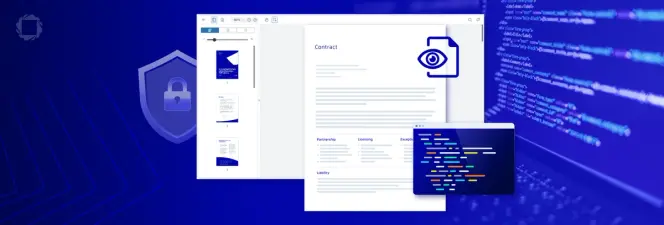How to Extract ACORD Form Data using Template Extraction in .NET
By Isaac Maw | 2025 Feb 12
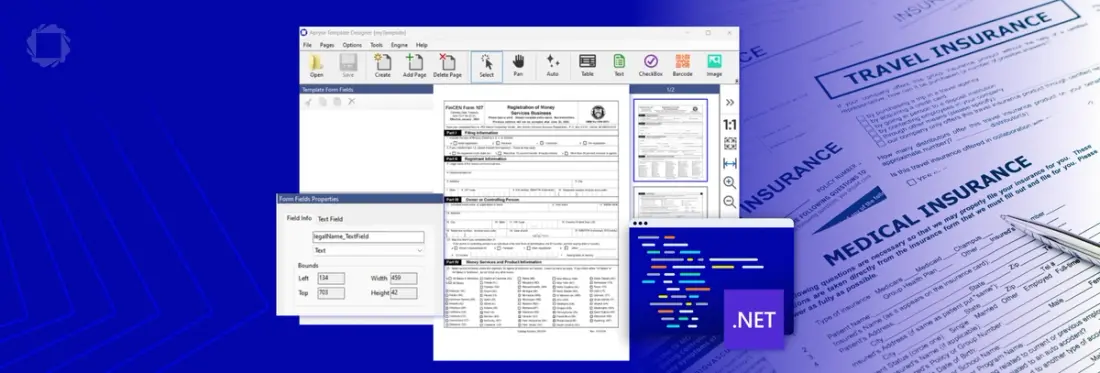
3 min
Tags
pdf editing
data extraction
Summary: Insurance providers managing high volumes of ACORD forms need efficient extraction solutions to retrieve valuable user data. Template Extraction offers a more efficient solution, allowing users to create custom templates that target specific input fields, ignoring irrelevant text. Check out how to extract data in .JSON format for seamless integration into automated processes, software, or databases.
What are ACORD forms?
Of course, if you’ve arrived at this blog article, you’re probably familar with ACORD forms, but ACORD forms are standardized documents used in the insurance industry to facilitate the exchange of information between insurance companies, agents, and customers. These forms help ensure consistency, accuracy, and efficiency in processing insurance-related data. In addition to .NET, the SDK also supports Java.
Because insurance providers manage high volumes of ACORD forms, they need reliable and scalable automated extraction solutions to quickly retrieve the meaningful user inputted data from the forms, in order to serve customers.
However, dated extraction processes such as OCR can only digitize all the text in the file, resulting in a mix of form data, such as instructions and field labels, with valuable user input data. In addition, complex intelligent data processing (IDP) solutions waste resources analyzing each form, when the structured nature of the ACORD form means a more efficient solution is possible.
That’s where Template Extraction comes in. Just as a human worker would automatically ignore form text such as instructions and labels and focus on user inputted data, template extraction allows users to set up, without coding, specific templates that select user input fields on forms so that the SDK knows which text and data is important to extract.
This data is exported in .JSON format for use in automated processes, other software, or a database, for example.
Contact Us to Try the Template Extraction Demo!
If you’re interested in extracting barcode data from digital files such as images and documents, check out our barcode extraction capability.
Benefits of Apryse Template Extraction
- Document Classification: Automatically selects the correct template from thousands of user-defined options.
- Confidence Scoring: Provides confidence ratings for extracted data, ensuring accuracy.
- Semi-Structured Data Support: Handles dynamic elements such as tables with varying row counts.
- Preprocessing Capabilities: Includes cleaning and alignment tools to boost data recognition accuracy.
- Flexible Output Format: Outputs structured data in JSON for seamless integration into your workflows.
How to Use the Apryse Template Extraction SDK
Apryse Template Extraction is a high-level .NET SDK that harnesses the power of Apryse's intelligently identifying document components and features that can be used to classify and extract scanned documents. The Template Extraction module can even be used to define recognition boxes for automatic extraction of any part of a template.
Create Template File
To create a template file, use the Apryse Template Designer Application.
When you launch the Template Designer, you will see this window displaying,”No Loaded Template Form...”
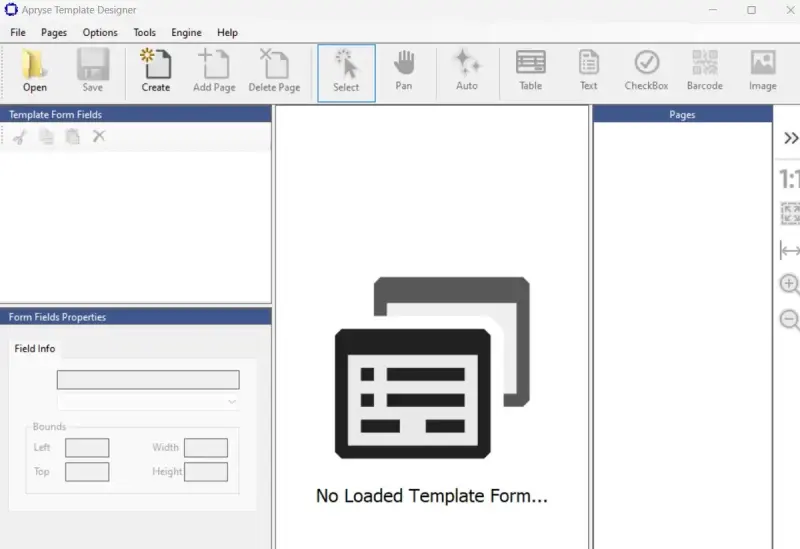
Now, to create the template form, click the ”Create” button in the toolbar as shown in the screenshot above. You can also find ”Create Template Form” in the File menu. Name your file appropriately for use as your template for this document type. This file will be saved in the .template format.
Now that we have an empty template, we’ll add some form pages to it.
To do this, click the “Add Page” button in the top toolbar. You can also find “Add Template Form Page” in the Pages menu.
These pages, now added to your template, can be in various file formats. For example, a high-resolution image containing a scanned page of your ACORD form.
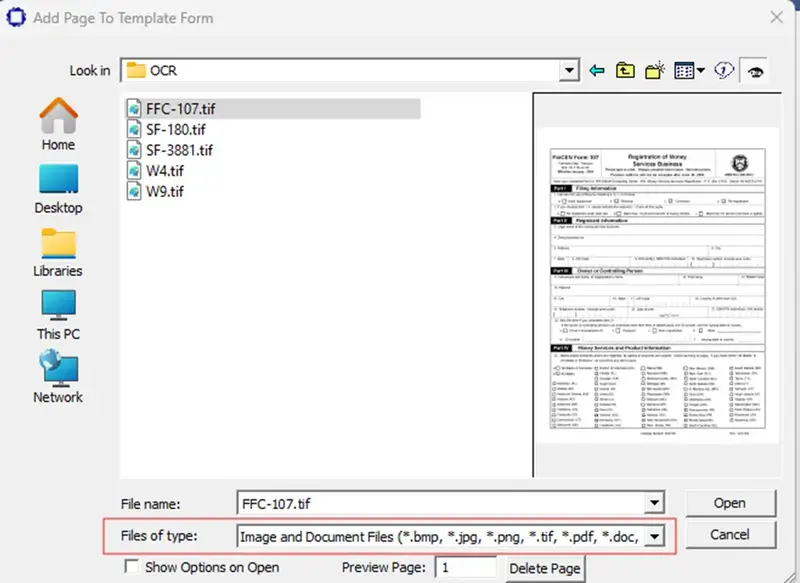
This file contains two pages, so we are prompted to choose whether to add all the pages or just one.
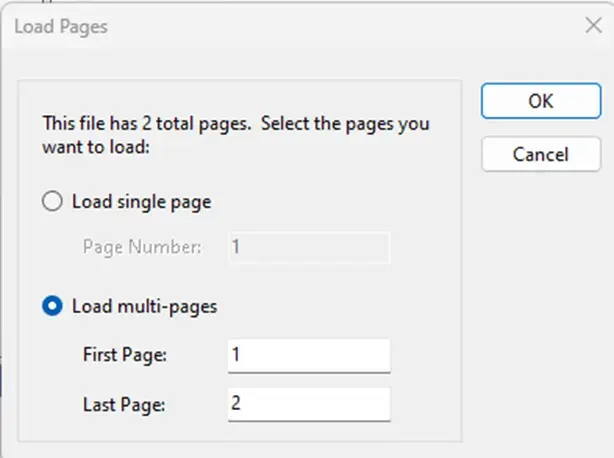
Clicking OK in the screenshot above, with ‘Load multi-pages' selected, loads all the pages in this file. The pages will appear in the right thumbnail viewer, where you can switch between them to view and edit.
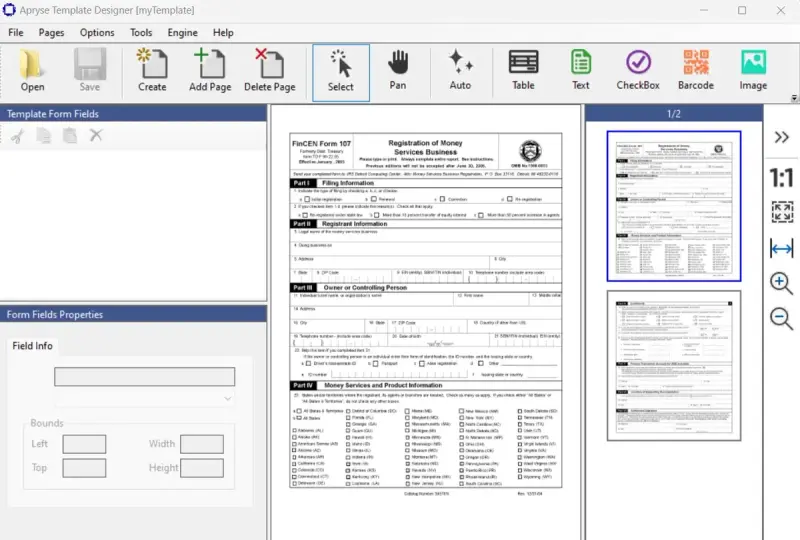
Next, we will add fields to the template form to capture data from the filled forms after they’re extracted. The type of field depends on the nature of the data that will be filled in it.
You can see the types of fields in the top toolbar.

For example, we’ll add a checkbox, which is also known as a radio button.
With “CheckBox” selected from the toolbar, draw a rectangle around the specified area on the page, as shown:

To set up the properties of the field, check the ”Form Fields Properties” in the left panel. In the first tab, set the field name and change its type. For example, in the screenshot above, we’ll set the field name to ”Inital Registration Check Box” and click save in the upper toolbar.
The process for adding text form fields is similar. First, we’ll select the “Text” button in the upper toolbar, draw the area of the form to be extracted, and set the Form Fields Properties.

Lastly, the Template Designer Application is smart. You can click ”Auto” in the top toolbar to automatically detect and add fields to the form template. You can edit, add or delete the generated fields to meet your needs.
To get a more detailed look at these steps, plus additional features of the Template Designer Application, check out the guide in our documentation.
Extract Templated Data
Now that you have set up your template, you’re ready to apply the template to an input file and begin extracting valuable data.
Classify an Input File against a Collection of Templates
The Apryse Template Extraction SDK supports intake of multiple form types, which can be automatically classified and matched with the correct template to extract data the right way.
To classify an input file against a group of template forms, try:
To find out more features and the API details of the Template Extraction SDK, visit the documentation page.
Conclusion
ACORD forms are a valuable tool in the insurance industry, but industry leaders are always looking for ways to improve customer experience and workflow efficiency in processing these forms. With template extraction, you can put together a new approach to automating the flow of information from completed ACORD forms to other systems, helping serve customers better.
The Apryse Template Extraction SDK may be the solution to improving your ACORD form workflow. To learn more, contact sales.
Tags
pdf editing
data extraction

Isaac Maw
Technical Content Creator
Share this post


